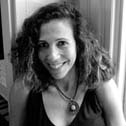Originally trained as an architect at Cornell University , Rania Matar studied photography at the New England School of Photography and in Oaxaca Mexico with Magnum photographer Constantine Manos. She currently works full-time as a freelance photographer and focuses on the Middle East photographing the changes that are occurring. Her focus had been on women and children, mainly in Lebanon where she has been documenting the recent spread of the veil among Moslem women, life in the Palestinian refugee camps, and most recently the aftermath of war in Lebanon .
Rania has exhibited her work locally in several venues in the Boston area and nationally in juried and solo shows. Her work was recently published in B&W magazine as a recipient of an excellence award, and in Shots 92 magazine for the Documentary Project. This past summer her images were exhibited in Tucuman , Argentina in the “Secunda Bienal Argentina de Fotografia Documental”, and in Aleppo , Syria in the 9 th Annual International Photography Gathering. Her project “The Veil: Modesty, Fashion, Devotion or Political Statement?” won honorable mention of the Berenice Abbott Prize in 2006. Her images won first prize in the photo contest “Beauty” by Women in Photography International in 2005, first prize at the Jerusalem Fund Gallery in 2005, and honorable mentions at the Santa Fe Center for Photography in 2006, the Silver Eye Center for Photography Fellowship 2005 and 2006, and the Golden Light Awards in both the “People and Portraits” and the “Social Document” categories in 2006. Her images were recently selected by Women in Photography International as winning images for “Turning Silver”.
The Aftermath of War in Lebanon
While Lebanon had already survived a fifteen year brutal civil and was finally being rebuilt and booming, all seem to fall apart this past summer as a full pledged war between Israel and Hezbollah unexpectedly started on July 12 at the peak of the tourist season.
This most recent war has created a million refugees in a country of 3.5 millions. The humanitarian situation was disastrous in areas; farming areas are still strewn with unexploded cluster bombs; the oil spill along the length of the coast still poses a huge environmental problem; the infrastructure of the country has been destroyed: bridges, airport, communication stations, harbors, etc; people lost their homes and whole areas have been reduced to rubbles. However what struck me most on my most recent trip after the war, besides the massive destruction, is how quickly Lebanese people, now seasoned from the experience of war resume their lives again, how quickly reconstruction is set to begin and how resilient people became..
I spent my time between the southern suburbs of Beirut and the South of Lebanon, areas that have been severely bombed and destroyed during this last conflict. While I did photograph the destruction and the objects found in the rubble memories of a previous life, my main focus was on the people. I was welcome in people's homes or whatever was left from their home, I was humbled by people's resiliency and I was mostly overwhelmed by the damage done to normal people's lives. As such, in this photo essay I focus on the people, on the people who are looking for their belongings in the rubbles, on the people trying to move on despite what they have been through, and mostly on the people who did not lose their humanity, hospitality and resiliency despite what they have been through. |
